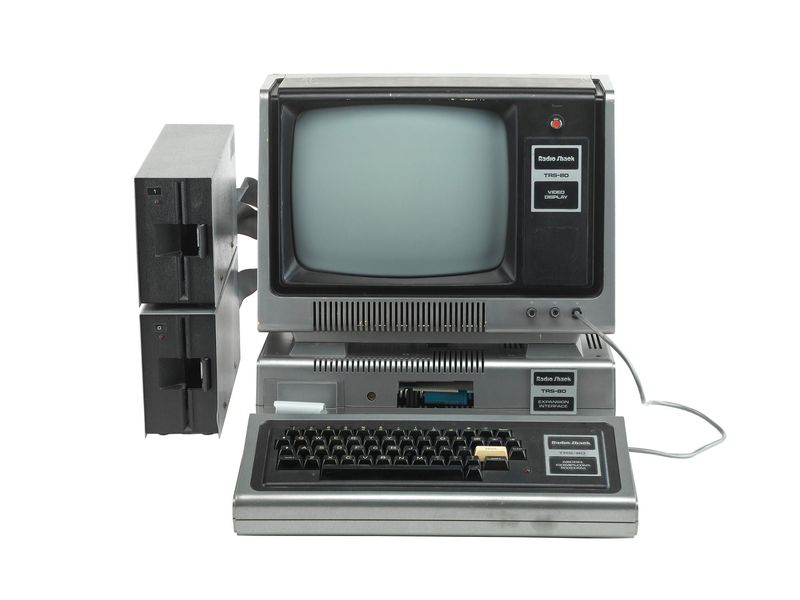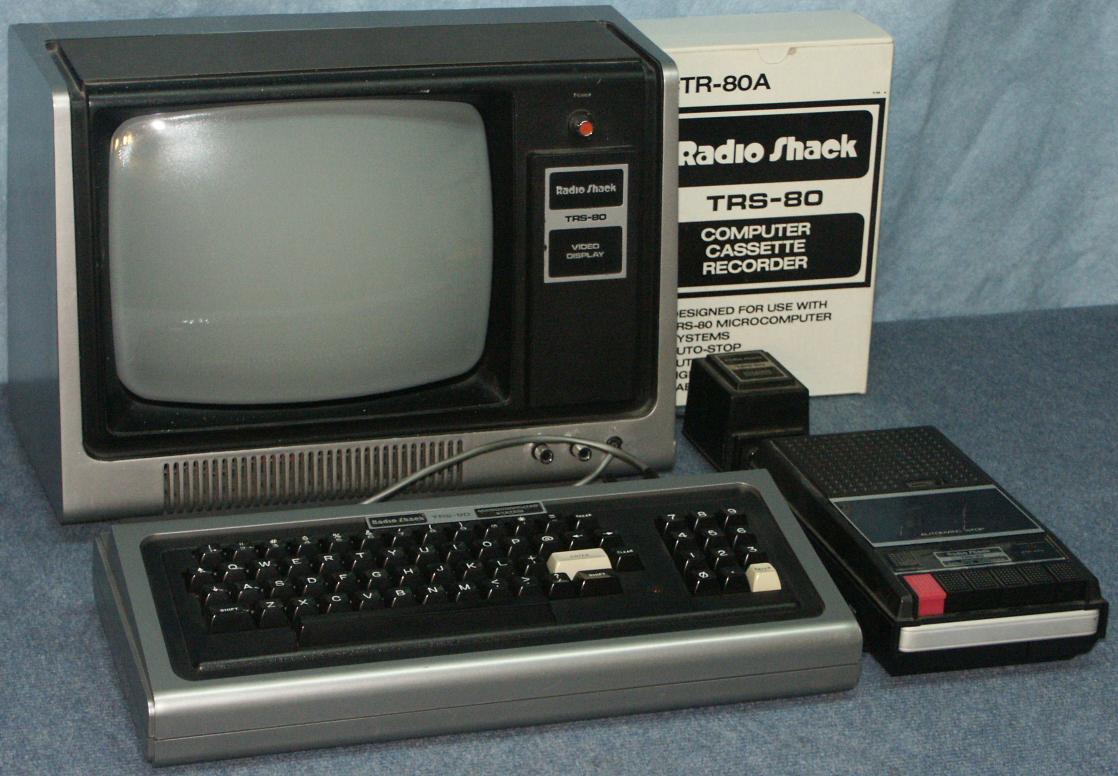The story of iron: 40 years ago went on sale a personal computer TRS-80

On August 3, 1977, Tandy Corporation, together with Radio Shack, released one of the world's first personal computers, the TRS-80, to free sale. Partners, of course, wanted to succeed in selling their products. But both companies had no idea that this computer would not only become popular, but also go down in history. The management that managed this project set a maximum sales plan of 1000 units per month, not too much hoping for its implementation.
Reality exceeded all expectations. As soon as the six hundred dollar TRS-80 hit the store shelves, they began to disassemble it like hot cakes. It can be said that this model led to the fact that computer enthusiasts "from the people" began to appear in the USA and other countries, rather than academic organizations. A new era has begun, in which computers play one of the main roles.
The TRS-80 itself was not bad, although working with it was complicated by the need to perform many operations to solve relatively simple tasks. But that didn't stop anyone. In the first month, the number of sales of this PC model was ten times higher than the expected level. It became clear that ordinary people are already ready to use quite sophisticated equipment.
Of course, this model was not the first personal computer that went on sale. Prior to this, the PC was introduced to the MITS Altair microcomputer. For the first time about it told the publication Popular Electronics in 1975. Then IBM and Apple began to release their own versions of personal computers. But only TRS-80 can be called one of the first computer systems, which immediately after it was installed on the user's table, was ready for use. It is fully assembled, it was not necessary to refine it, adding any nodes and elements, it is not necessary to solder anything.
This computer did not have a hard disk, it could also “boast” of four kilobytes of RAM. But it was a fully-fledged computer. There were not so many applications for it, but there were already some specialized programs and even games. Some time after the release, this system was named the Model I. The kit included a cassette tape recorder, which allowed you to record data on tape and then read them.
The motherboard and computer keyboard were combined in one case. The processor here worked at a frequency of 1.77 MHz, the Zilog Z80 was used in the system. Later models were already supplied with Z80A processors. Also, after some time, the developers increased the amount of RAM - from 4 KB to 16 KB.

The video controller of the system supported quite good for that time text mode with 16 lines of 64 or 32 characters per line. The resolution was 128 * 48 pixels. Video memory was installed separately, its volume was 1024 * 7 bits. In this case, the lower 6 bits determined the ASCII character code, or were displayed on the screen directly in the form of a grid of 2 * 3 blocks. In subsequent models, including the TRS-80 Color Computer , a “semi-graphic mode” was added, where low-resolution graphics were emulated with special characters.
The kit, in addition to the cassette Radio Shack CTR-41 , included a black and white CRT monitor, which was a slightly modified RCA XL-100 TV. His screen glowed a light blue color that tired his eyes. For this reason, some users installed green or yellow color filters on the display, or simply replaced the whole kinescope. Realizing the problem, the developers began to produce a monitor with a green glow.
Due to the presence of a cassette recorder, all user data was recorded on a compact cassette. The computer, namely, its tape interface was sensitive to changes in the signal recording level. It was difficult to understand that the recording goes right, so users recorded their data several times on different tapes, quite reasonably believing that one of the recorded copies of the data would be readable later.
All Articles